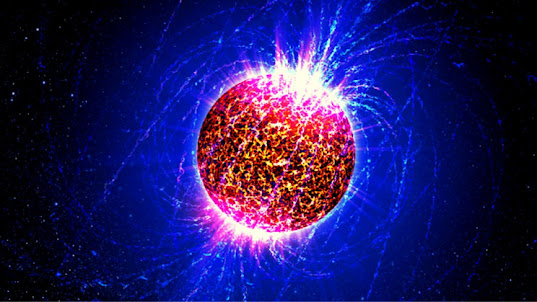If you can't beat nature, join it.
In the search for a means of detecting dark matter, scientists may have discovered a way to finally grasp the nature of this mysterious substance, according to a recent study published in the journal Physical Review Letters.
And the new way lies in the ultra-dense matter of neutron stars.
Neutron stars could serve as colossal dark matter detectors
As of writing, scientists have only indirectly inferred the existence of dark matter, and have yet to directly detect the bizarre substance that comprises most of the universe. It's not an easy ask for physicists to identify dark matter particles in Earth-based experiments, since they interact with regular matter with unimaginably rare frequency. So to find them, we'll need an extremely large detector — so big that it's unconscionably impractical to build one here on Earth. But nature has provided us a viable alternative means in the form of neutron stars, which can operate as a colossal dark matter detector, according to the study.
The researchers have uncovered a way to glean information of a much more accurate variety from these unique and gigantic dark matter detectors. Neutron stars are the densest ones known to science, and come into being when colossal stars die in a supernova explosion. The core remaining afterwards then collapses into a tightly-packed sphere, pulled inward by gravity with such great force that the protons and electrons combine, and create neutrons. In this state, a neutron star with the mass of our sun would have a roughly 6.2 miles (10 km) radius, and even a single teaspoon of the neutron star's matter would have a mass equivalent to one billion tons.
That's a heavy spoon.
Dark matter particles could collapse neutron stars into black holes
But this is also why these baffling stars are "cosmic laboratories" that allow us to study the way dark matter behaves in high-gravity conditions that we simply can't recreate on Earth. Dark matter rarely interacts with ordinary, quotidian matter, and can move through an entire light-year, which is roughly 6.2 trillion miles (10 trillion km), without losing all of its velocity. But neutron stars are so incredibly dense, that they might have the ability to stop dark matter particles in transit through them. The theory is that dark matter particles would slam into the neutrons of the heavy star, lose kinetic energy (or speed), and become trapped in immense gravity.
On a long enough timeline, the dark matter particles would accumulate within the neutron star's core, and then heat the ancient, bone-shatteringly cold star to a degree that we might be able to observe from incredible distances. In fact, if enough dark matter is collected by a neutron star, it could even trigger the collapse of the host star into a black hole. This might even be something we could detect happening one day. While this is an incredible sight to imagine beholding, the key takeaway of this study is that we might have an ideal way of detecting dark matter directly using cosmic bodies provided by nature. And this method would greatly enhance both the robustness and accuracy of dark matter capture rate, opening the door to calculating the strength of the forces that dark matter particles impose on ordinary matter, within the icy heart of neutron stars.
Reference: Home.CERN

